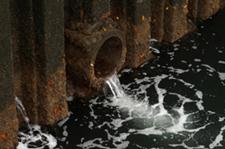River and Stream Pollution
Dirt
Dirt is a big cause of pollution in our rivers and streams. Rain washes dirt into streams and rivers. Dirt can smother fish and other animals that live in the water. If plants can't get enough sunlight because the water is murky, they die.
Most of the dirt washing into lakes and streams comes from exposed earth. This exposed earth includes plowed fields, construction sites, and areas that have been logged or mined. Some of the dirt polluting streams comes from the stream banks.
The solution is to stop the dirt from getting into the stream in the first place by disturbing the land as little as possible. Farmers and construction workers are using new methods to reduce the amount of earth they disturb.
Bacteria
Bacteria are also a big water quality problem. Not all bacteria are harmful, but germs and viruses that can make you sick might be in the water. Bacteria can come from combined sewers after rainstorms and runoff of animal waste from farms, pets, and wildlife.
Sewage systems can be improved to keep untreated sewage from overflowing. Farmers are developing better ways to manage livestock manure. Dog owners are picking up after their pets.
Nutrients
Nutrients are element needed for animal or plants to grow. The two most common nutrients found in water are nitrogen and phosphorus. They cause algae to grow and can turn the water green.
The major sources of nutrients are runoff of fertilizers from farms and lawns, animal waste, sewage treatment plants, and septic systems.
Farmers, homeowners, cities, and towns are all working to reduce the amount of nutrients that get into rivers and streams.
Ponds, Lakes, and the Sea
Water in streams and rivers flows into ponds, lakes, and the sea. Keeping streams and rivers clean helps keep all the water downstream clean, too.



